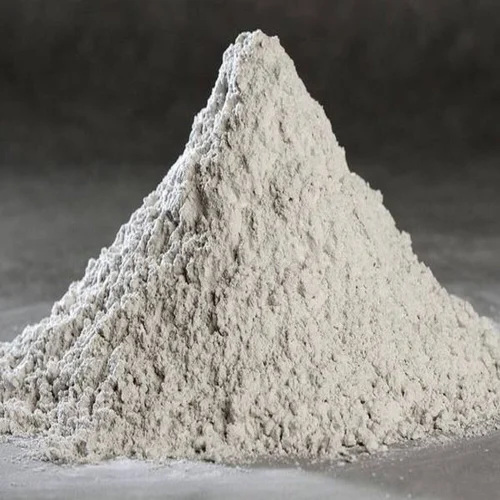Concrete is one of the most widely used construction materials globally, and innovations in its composition are continually being explored to enhance its performance, sustainability, and durability. One such innovation is the incorporation of Ground Granulated Blast Furnace Slag (GGBS) as a supplementary cementitious material. In this blog post, we’ll delve into what GGBS is, its properties, and the benefits it brings to concrete.
What is Ground Granulated Blast Furnace Slag (GGBS)?
GGBS is a byproduct of the iron and steel industry, specifically from the production of iron in blast furnaces. It is obtained by rapidly quenching molten slag from the blast furnace with water or steam, resulting in the formation of glassy granules. These granules are then ground into a fine powder, which is GGBS.
Properties of GGBS in Concrete
Improved Workability: GGBS particles are finer than Portland cement, which enhances the workability of fresh concrete. This improved workability makes concrete easier to place and finish.
Reduced Heat of Hydration: The use of GGBS reduces the heat generated during the hydration of cementitious materials. This is especially valuable in large concrete pours, as it minimizes the risk of thermal cracking.
Increased Durability: GGBS significantly enhances the durability of concrete by reducing its permeability, improving sulfate resistance, and mitigating the risk of alkali-silica reaction (ASR).
Increased Strength and Long-Term Performance: While GGBS may initially result in slower strength gain compared to pure Portland cement, it often leads to higher ultimate strengths and enhances the long-term performance of concrete.
Sustainability: Utilizing GGBS in concrete is environmentally sustainable. By incorporating a byproduct that would otherwise be disposed of, the carbon footprint of concrete production is reduced. GGBS also requires less energy to produce compared to Portland cement.
Color and Aesthetics: Concrete containing GGBS typically has a lighter color than traditional concrete, which can be aesthetically pleasing for certain applications.
Construction Projects That Successfully Used GGBS Cement
- The Channel Tunnel (UK-France):
The Channel Tunnel, also known as the Eurotunnel, is one of the most significant infrastructure projects in Europe. GGBS was used in the concrete mix to enhance durability and reduce the heat of hydration, which was crucial for the long tunnel sections. - Burj Khalifa (Dubai, UAE):
The world’s tallest building, Burj Khalifa, utilized GGBS in its concrete to achieve high strength and durability.The use of GGBS helped in reducing the heat of hydration and improving the workability of the concrete. - The Confederation Bridge (Canada):
This bridge, which connects Prince Edward Island to mainland Canada, incorporated GGBS in its concrete to improve resistance to sulfate attack and enhance durability in the harsh marine environment. - The Gotthard Base Tunnel (Switzerland):
The world’s longest and deepest railway tunnel used GGBS in its concrete to ensure long-term durability and reduce the risk of thermal cracking during the curing process. - The One World Trade Center (New York, USA):
GGBS was used in the construction of One World Trade Center to improve the strength and durability of the concrete, as well as to reduce the environmental impact of the construction process.
These examples highlight the versatility and benefits of using GGBS in various high-profile construction projects around the world.
By understanding and leveraging the properties of GGBS, engineers, and builders can create stronger, more durable, and environmentally friendly concrete structures.
Read Also- Types of Cement, Their Properties and Applications
Effect of GGBS on strength
Ground Granulated Blast Furnace Slag (GGBS) has a significant impact on the strength of concrete, both in the short term and long term. Here’s how it affects concrete strength:
- Short-Term Strength
Slower Early Strength Gain: Concrete containing GGBS typically gains strength more slowly in the early stages compared to concrete made with only Portland cement. This is because GGBS reacts more slowly with water than Portland cement does. - Long-Term Strength
Higher Ultimate Strength: Over time, concrete with GGBS often achieves higher ultimate strength than conventional concrete. The slower reaction rate of GGBS allows for a more complete and thorough hydration process, which contributes to the development of a denser and stronger microstructure.
Read Also- Admixtures of Concrete Explained in Detail (Concrete Technology)
Factors Influencing Strength Development
- Curing Conditions: Proper curing is essential to maximize the strength benefits of GGBS. Adequate moisture and temperature control during the curing process help ensure that the GGBS fully reacts and contributes to strength development.
- Replacement Level: The proportion of GGBS used to replace Portland cement can affect strength. Typically, replacement levels range from 20% to 70%, with higher replacement levels generally leading to greater long-term strength gains.
- Mix Design: The overall mix design, including water-to-cement ratio and the use of other supplementary cementitious materials, can influence how GGBS affects concrete strength.
Benefits of GGBS in Concrete Strength
-
- Enhanced Durability: The denser microstructure resulting from the use of GGBS not only improves strength but also enhances the durability of concrete, making it more resistant to environmental factors such as sulfate attack and chloride penetration.
- Reduced Permeability: Concrete with GGBS has lower permeability, which helps protect the reinforcing steel within the concrete from corrosion, further contributing to the long-term strength and durability of the structure.
Conclusion:
The use of Ground Granulated Blast Furnace Slag in concrete offers numerous benefits, from improved workability and durability to enhanced sustainability.
As the construction industry continues to seek ways to reduce its environmental impact, GGBS stands out as a valuable material that not only improves the performance of concrete but also contributes to a more sustainable future.
While GGBS may slow down early strength gain, it significantly enhances the long-term strength and durability of concrete. This makes it a valuable material for projects where long-term performance is critical.
Do you have any specific projects or applications in mind where you’re considering using GGBS?
Read Also- Methods of Concrete Curing – Concrete Technology
Self Compacting Concrete – Properties and Application
Lightweight Concrete – Making And Applications
